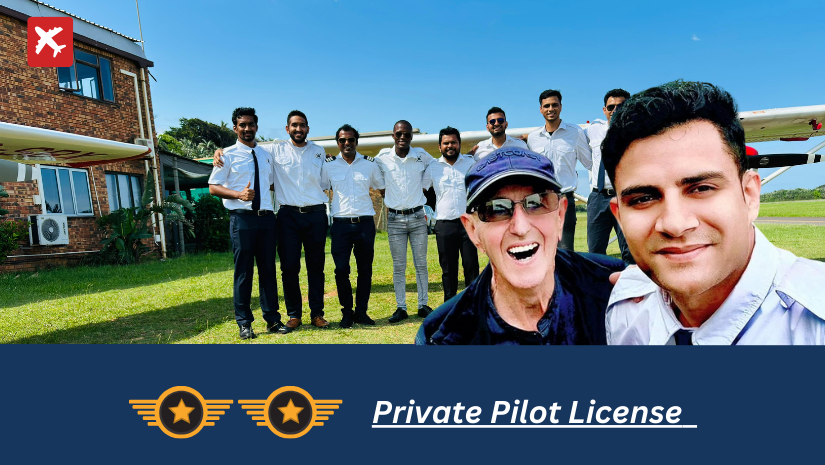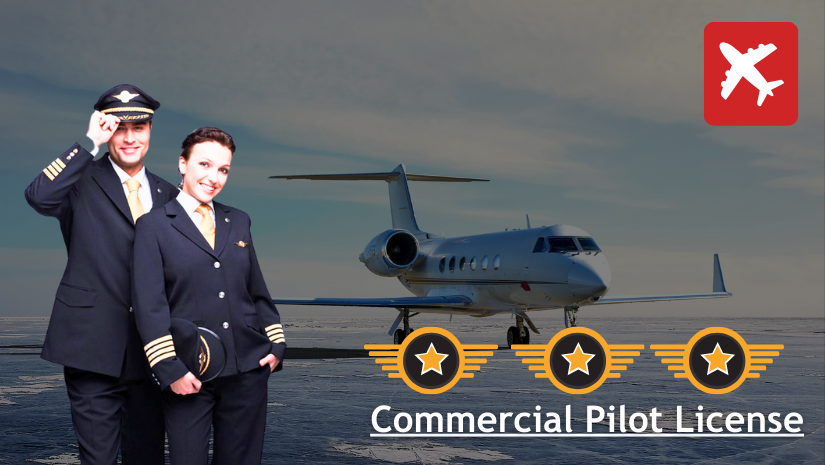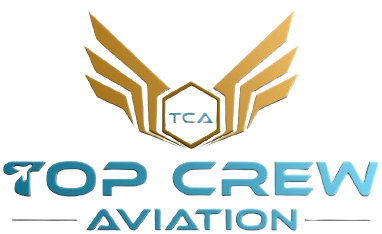After completing your 12th grade, you can pursue various aviation courses to kickstart your journey for a pilot license. Not every course will lead to a pilot journey. Some courses will lead to other trades in Aviation.
The aviation field’s different courses
- Aircraft Maintenance Engineering (AME)
- Aircraft Design and Maintenance course
- Aircraft Dispatcher
- Airport Management
- Air Traffic Control Courses
- Air Hostess/Cabin Crew Training
Here are some popular courses to choose to get your pilot license. This systematic approach helps start a career as a pilot in Indian aviation.
- Student Pilot License (SPL)
- Private Pilot License (PPL)
- Commercial Pilot License (CPL)
There are different levels and stages that one needs to clear before completing the commercial pilot course. The pilot aspirant needs to finish his ground class, clear all exams and then apply for a student pilot license.
Do you plan to apply for the Indigo Airlines Cadet Pilot Program (CPP)? If you want to go in for the conventional pilot program it does not matter. The DGCA syllabus helps understand the theoretical concepts one should know before sitting in the cockpit. After securing a CPL, one can aim for an Airline Transport Pilot License (ATPL). The reason is that Indian aviation has still not adopted the Multi-Crew Pilot License (MPL) added by ICAO in 2006.
Student Pilot License (SPL)
Individuals wishing to take up flight training to become a pilot first acquire a student pilot license. The SPL allows the candidate to train as a pilot under the guidance of a certified flight instructor. Here’s what you need to know about obtaining an SPL in India.

SPL Pilot License Eligibility Criteria:
To be eligible for an SPL in India, the candidate must meet the following general requirements:
- The candidate should be at least 16 years of age.
- He should have clear concepts of Physics and Math to understand calculations.
- The candidate needs to pass a Class 2 medical examination. A pre-designated medical examiner conducts this exam.
- He should have a minimum educational qualification of a 10th-standard pass.
- English reading, writing, and comprehension should be your abilities.
How to Obtain an SPL:
Theory Examinations: You’ll need to pass various DGCA theory examinations during your training. These exams cover the subjects you studied in the Best Ground School in India.
Select the Best Flying School: Choose a DGCA (Directorate General of Civil Aviation) approved flying school in India. The DGCA is the regulatory body for civil aviation in India. The DGCA regulates the safety of civil aviation in India. Hence you can be sure of high standards of safety norms related to flight training.
Join Ground School: Enroll in the ground school program. This program covers aviation theory, regulations, navigation, meteorology, and other subjects.
Medical Examination: Schedule a Class 2 medical examination with a DGCA-approved aviation medical examiner. Your passing the medical exam guarantees that you are in good enough health to fly.
Apply for SPL: The student after completing the ground school and passing the medical examination goes to the flying school. Then he applies for the Student Pilot License through the flying school. The flight school guides him through the application process.
Flight Training: When the student secures his SPL, he is eligible to start flight training. This he does under the guidance of a (CFI) Certified Flight Instructor. He adds up flying hours and gets hands-on experience during this stage.
Multi-Crew Flying: The candidate being a novice begins learning under the guidance of a (CFI) Certified Flight Instructor.
Flight Tests: The student pilot needs to pass the flight training exam, before advancing to the advanced PPL level. A flight instructor assigned by the DGCA administers the flight training exam.
Upgrade to a Private Pilot License (PPL): When you meet all the requirements of SPL, expected flying hours, and clear all the exams, and necessary checks, you can apply to upgrade and convert your SPL to a PPL (private pilot license).
Private Pilot License (PPL)
A Private Pilot License (PPL) permits the candidate to fly an airplane for individual and sporting purposes. You can’t fly for commercial purposes or join someone on a salary basis. It’s a typical and popular license for hobby flying and sport flying. The following are some requirements to obtain a Private Pilot License (PPL).

PPL Eligibility Criteria:
The qualifying standards for getting a PPL may differ from one country to another. Indian Aviation Regulatory will require the below checks before offering you a PPL.
Age Bar: You should not be less than 17 years of age to apply for a PPL.
Educational Qualification: You should be a 10+2 (Sr. Secondary) or equivalent diploma holder.
Medical Checks: You should clear the Class 1 medical assessment conducted by a DGCA-approved medical examiner. You must undergo certain medical tests to clear the Class 1 medical testament.
Language: You should have a good command of the English language to read, write, speak, and understand the neutral accent. You should be able to communicate with your co-pilot and (ATC) Air Traffic Control without any issues.
How to Move from SPL to PPL (Private Pilot License):
The candidate finishes all the checks for SPL, and thereafter clears following pilot training modules to secure his PPL license. He clears the following checks as given under:
Flight Training: After completing 40–50 hours of flight training, you will clear every evaluation. During this preparation, you’ll figure out how an airplane flies and how to operate all the functions within the cockpit.
Solo Flight: The flying club approves solo flying for the student pilot, once he acquires sufficient experience and proven abilities. The student pilot must complete several examinations and evaluations before acquiring solo command of the aircraft.
Cross-country Flights: You’ll finish cross-country flying to acquire route, navigation, and flight experience in broad regions.
Night Flight Training: During this PPL flight training, one flies for a few hours at night to gain night-flying experience.
Check ride: The last move toward acquiring your PPL is the check ride, also known as the flight test. A certified flight inspector from the DGCA authority or an approved pilot inspector will assess the flying abilities. He basically checks the candidate’s skillfulness in flying in different circumstances. The candidate exhibits his capabilities to swiftly operate the aircraft.
Secure Your PPL: The DGCA issues a Private Pilot License to a candidate when he clears the check ride. The candidate clears the check ride during which the flight school checks and ensures all prerequisites are met. Then he can fly an aircraft for personal, non-commercial use as a Pilot in Command (PIC). Upon acquiring the PPL, the pilot can fly for private aviation, amusement, or sport. He has no authority to earn money with a flight.
Commercial Pilot License (CPL)
A Commercial Pilot License (CPL) is the stage when one flies airplanes for commercial use. It is a higher level of pilot’s permit. It allows one to become the Pilot in Command (PIC) of an airplane for remuneration or commercial use. One needs to undergo certain checks and flying training to secure a CPL.

CPL Eligibility Criteria:
The following are the prerequisites for obtaining a CPL in India.
Age: One must be 18 years old to apply to obtain a CPL.. But can start the journey of training at the age of 16 years.
Educational Qualification: The candidate must have completed 10 + 2 (Higher Secondary) with Physics and Math. The schooling needs to be completed by a a recognized board or university.
Written Exams: The candidate must clear all 5 DGCA papers. They include Air Navigation, Meteorology, Air Regulation, Technical General, and Technical Specific. He must obtain a minimum of over 70% scores and also clear RTR(A).
Flight Hours: The candidate needs to have a minimum of 200 flight hours. This consists of 10 hours of simulator training and 185 hours on a single-engine aircraft. Alongside he must have completed 15 hours on a multi-engine aircraft.
Cross-Country Flights: The candidate should have accrued a specific amount of cross-country flying hours, including solo flights to his name.
Night Flight Hours: Some countries require a minimum number of night flight hours.
Medical Certificate: You must hold a Class 1 medical certificate, from a DGCA-approved medical examiner.
Pilot License Checklist for CPL
- Minimum hundred hours of flight time as Pilot-in-Command
- Cross-country flights should be above three hundred nautical miles
- Minimum ten hours of instrument time with a minimum of five hours on a simulator
- Minimum fifteen hours within six months immediately after the application for a license
- Minimum twenty hours of cross-country flight time as Pilot-in-Command
- As the pilot-in-command, a minimum of ten takeoffs and ten landings.
How to Obtain a CPL (Commercial Pilot License):
Select the Best Ground School: Enroll in one of the best ground schools, which covers advanced aviation theory. The school will need to cover Navigation, Meteorology, Regulations, Technical General, Technical Specific, and RTR in depth. One needs to pass all the written exams with a minimum of 70 marks.
Select a Flight School
The candidate needs to select a reputable flight school that offers CPL training and other pilot training programs. He can do it from Indian Flying Clubs or from abroad to save time. The candidate must finalize a flight school approved by the Aviation Authority in India.
Build Flight Hours
The candidate will need to complete a minimum of 200 flying hours including single-engine and multi-engine flying. This is the minimum requirement of flight hours for a CPL license, prescribed by the DGCA. Various roles fall under a pilot job. This includes flying as certified flight instructors, banner tow pilots, aerial tour pilots, and glider tow pilots. Additional opportunities can come in the form of a traffic watch pilot, pipeline and powerline patrol pilot, and agriculture pilot. Some interesting roles are aerial photography pilot, aerial survey pilot, skydive pilot, and ferry pilot.
Flight Training
The candidate goes through a strict schedule of flight preparation to improve his flying abilities and capability. A certified flight instructor monitors the flight training strictly as stipulated by DGCA norms..
Checkride
The candidate needs to clear a thorough check ride aka viable test or flight test. For this, the candidate needs to go through the flight hour prerequisites and do essential preparations. An evaluator will assess your flying abilities, thinking skills, and information.
Acquire Your CPL
The DGCA issues a commercial pilot license (CPL) to the candidate once he effectively passes the check rides. The flying school has to ensure that the candidate completes all the required checks.
With a CPL, you can pursue various career opportunities in aviation. A candidate fulfills his dream of becoming an airline pilot, cargo pilot, charter pilot, or flight instructor. Also, one can join the Indigo cadet pilot program or can take up other commercial flying roles.
Read More:- Cadet Pilot Program – Course, Eligibility, Recruitment and Selection Process
Conclusion
This article comprises the major differences between SPL, PPL, and CPL in securing solo or multi-crew pilot licenses in India. Among various aviation courses, DGCA Ground Classes will help you sail through your journey as a Pilot. This checklist will guide you to undergo the commercial pilot license course or Indigo airline’s cadet pilot program.

